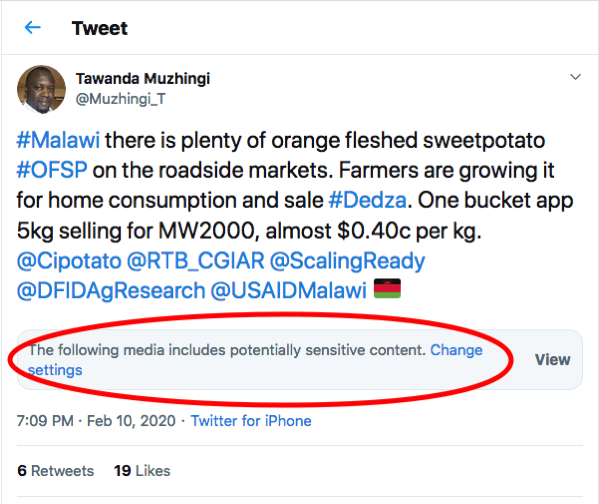Go on, follow the largest ever deposit to the Svalbard Global Seed Vault. There’s a hashtag, of course there is: #SeedVault2020.
You know you want to.
LATER: And, it’s a wrap!
https://twitter.com/NordGen/status/1232978684421734402
Agrobiodiversity is crops, livestock, foodways, microbes, pollinators, wild relatives …
Go on, follow the largest ever deposit to the Svalbard Global Seed Vault. There’s a hashtag, of course there is: #SeedVault2020.
You know you want to.
LATER: And, it’s a wrap!
https://twitter.com/NordGen/status/1232978684421734402
That’s the catchy title of a forthcoming conference on African indigenous vegetables, to be held 25-28 May 2020 in Arusha, Tanzania. Here’s the somewhat more clunky subhead: An All-Africa Summit on Diversifying Food Systems with African Traditional Vegetables to Increase Health, Nutrition and Wealth.
Regular readers of this blog will know that we have a thing for African leafy greens here, so we’ll be keeping a beady eye on this one. Thanks to the World Vegetable Centre for organizing it.
BTW, I’ve just noticed that WorldVeg has a new (at least to me) way to search for research on vegetables etc., called HARVEST.
And since I’m at it, kudos for including a link to the genebank on the banner at the top of the conference website, as well as the institute homepage. Kinda wish CGIAR centres did that too…
Oh, and the WorldVeg genebank is contributing to the largest ever deposit event to the Svalbard Global Seed Vault.
Oh, Twitter, you’re such a tease.
Knowing that I am currently working on orange-fleshed sweetpotatoes, Luigi kindly sent me a link to a tweet. This one:

That red ellipse? I’m drawing your attention to Twitter’s warning that seeing the images might bring on an attack of the vapours in highly-attuned personalities.
Is it just the word “fleshed”? I had to know.

I dunno. “Filth,” they say, “is in the mind of the beholder” and I have to say, I’m not seeing it.
Orange-flesh, though. Where else have I seen that? Maybe that’s what Twitter is trying to warn me against.
No matter. Congratulations to @CIPotato and @RTB_CGIAR.